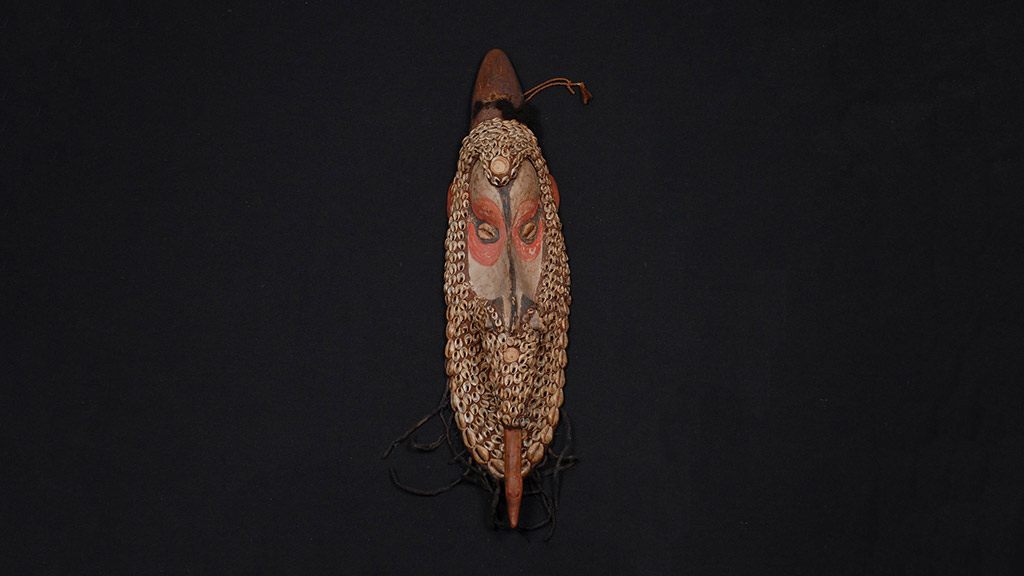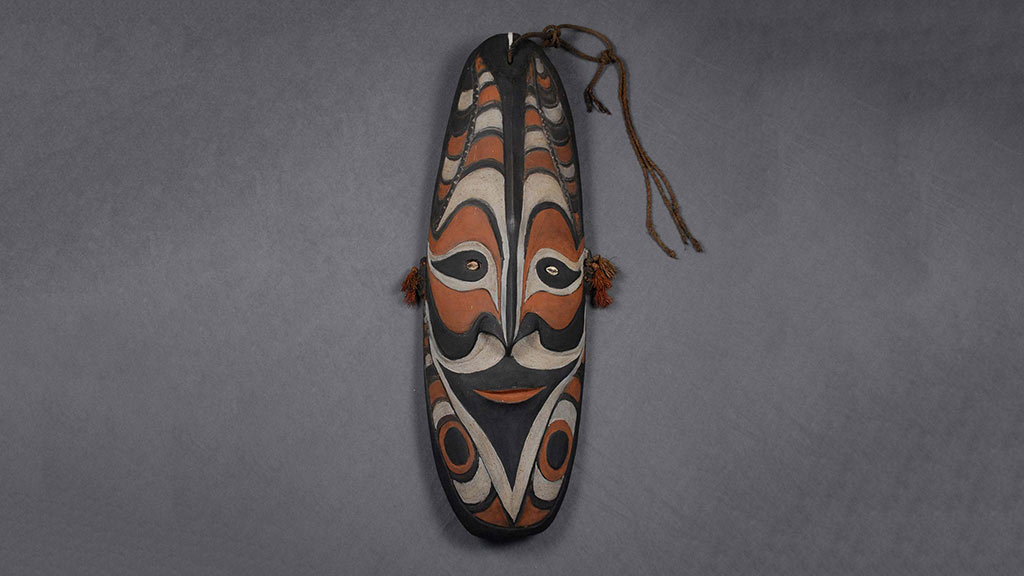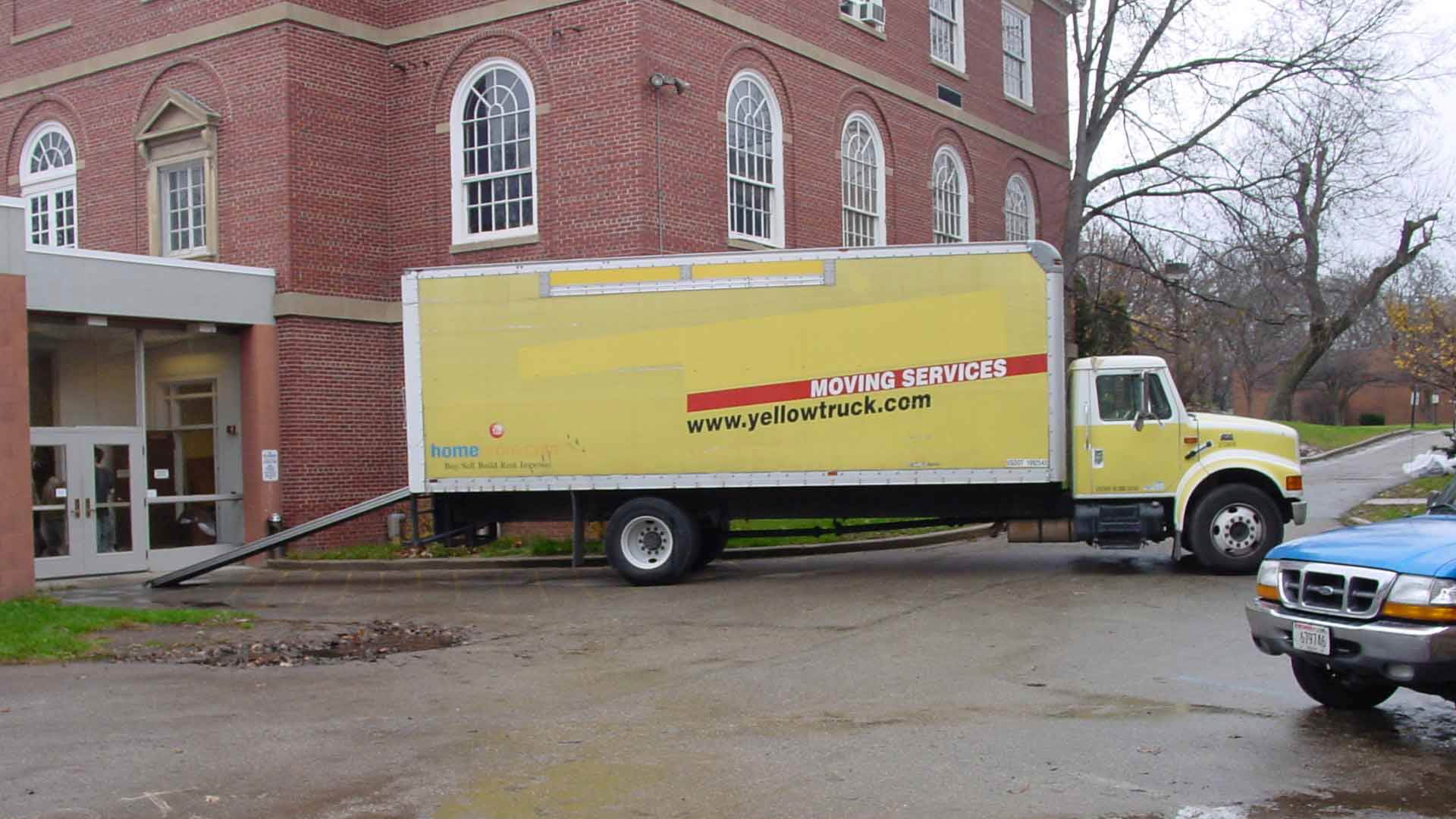
To Beloit and Back Again
- Post Date: 03/24/2005
- Reading Time: 4 minute read
-
 Tumbuan Mwai Mask Papua New Guinea Middle Sepik, Palembei River 2004.17.0185
Tumbuan Mwai Mask Papua New Guinea Middle Sepik, Palembei River 2004.17.0185 -
 Dance Mask Papua New Guinea Middle Sepik River, Black Water Lakes, Kaningara Village 2004.17.0189
Dance Mask Papua New Guinea Middle Sepik River, Black Water Lakes, Kaningara Village 2004.17.0189
On November 16th armed with 450 plastic bags, 96 rolls of tape, 4 huge rolls of bubble wrap, cardboard and acid free boxes of all sizes, plastic sheeting, hundreds of labels, pencils, markers, inventory lists, a 94 foot moving van, and a boom box, Spurlock Museum staff set off on a mission to pack and move approximately 367 extraordinary Melanesian artifacts of all shapes and sizes from the Logan Musem in Beloit Wisconsin to Urbana, to join the Museum's ever expanding holdings.
Part of a larger collection of 1500 artifacts acquired by Jim Tobin of Portland, Michigan during his travels across Papua New Guinea in 1984-1990, they were gifted to the Logan Museum in 1995. Overwhelmed by space and care demands of such a large number of items, Logan staff and curators carefully culled the collection and offered selected artifacts to other museums. Janet Keller, professor and anthropologist specializing in Oceanic cultures donated hours of her time reviewing the pieces for acquisition. Finally after the selection was made, the Sprulock Museum Board graciously provided financial support for the project.
-
 Phase 1 - Preparing the Artifacts: Staff from both Museums spent four days preparing the artifacts for transport. Every item was checked off a list as it was removed from the shelf, tagged with the new Spurlock number, cross-referenced with the Logan Museum's accession numbers, and listed on a box and pallet inventory for shipping.
Phase 1 - Preparing the Artifacts: Staff from both Museums spent four days preparing the artifacts for transport. Every item was checked off a list as it was removed from the shelf, tagged with the new Spurlock number, cross-referenced with the Logan Museum's accession numbers, and listed on a box and pallet inventory for shipping.
-
 Phase 8 - Unloading the Artifacts: The artifacts are unloaded into the Museum's storage rooms. Finally everything reached its destination safe and sound!
Phase 8 - Unloading the Artifacts: The artifacts are unloaded into the Museum's storage rooms. Finally everything reached its destination safe and sound! -
 Phase 9 - Conclusion: Although the Museum staff's initial mission is accomplished, the work is far from over. It will take years to complete careful cleaning, documentation, and proper storage for each artifact. But it is well worth the investment as these rare artifacs will be available for research to students, professors, and scholars for exhibition for years to come.
Phase 9 - Conclusion: Although the Museum staff's initial mission is accomplished, the work is far from over. It will take years to complete careful cleaning, documentation, and proper storage for each artifact. But it is well worth the investment as these rare artifacs will be available for research to students, professors, and scholars for exhibition for years to come.
-
- Share: 𝕏
- Subscribe to Newletter
- Giving






